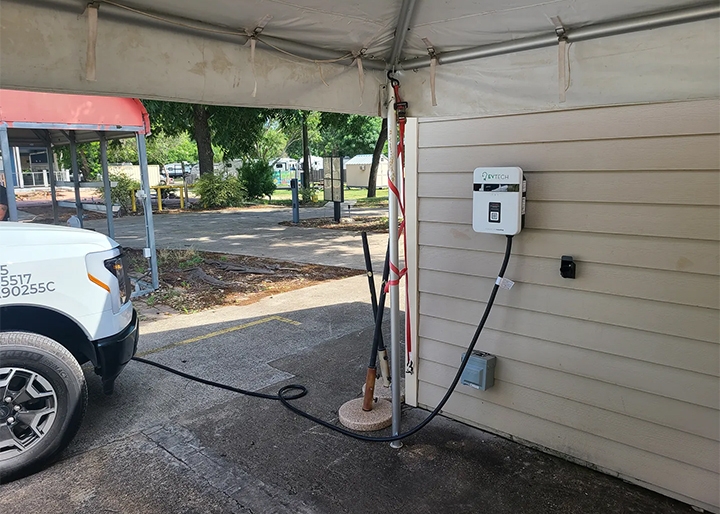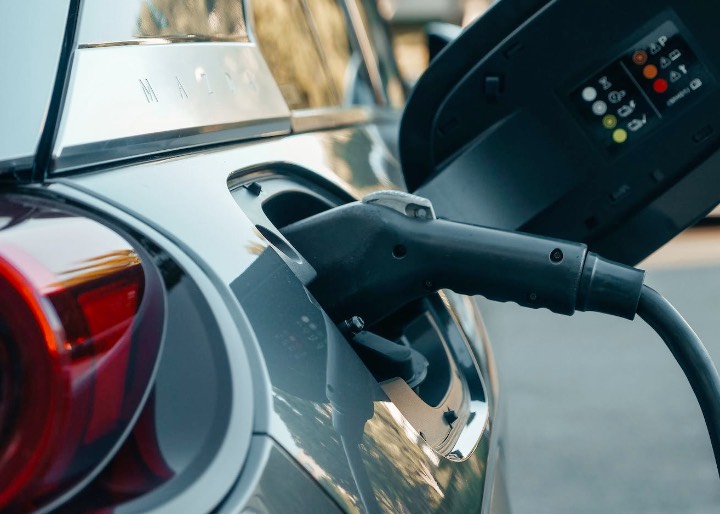
EV Tipping Point 5%, According to Bloomberg
Much like smart phone adoption over a decade ago, a society-altering shift is beginning to happen with electric vehicles. According to a Bloomberg report and adoption-rate analysis, the US recently passed the 5% threshold. This means that five percent of all new vehicles sold are powered only by electricity. This 5% rate marks a beginning period of rapid technological change in consumer preferences, according to prior market studies.
Why is 5% so important?
Most successful new technologies — electricity, televisions, mobile phones, the internet, even LED lightbulbs — follow an S-shaped adoption curve. Sales move at a crawl in the early-adopter phase, then surprisingly quickly once things go mainstream.
In the case of electric vehicles, 5% seems to be the point when early adopters are overtaken by mainstream demand. Before then, sales tend to be slow and unpredictable. Afterward, rapidly accelerating demand ensues.
It makes sense that countries around the world would follow similar patterns of EV adoption. Most impediments are universal: there aren’t enough public chargers, the cars are expensive and in limited supply, buyers don’t know much about them. Once the road has been paved for the first 5%, the masses soon follow.
Thus the adoption curve followed by South Korea starting in 2021 ends up looking a lot like the one taken by China in 2018, which is similar to Norway after its first 5% quarter in 2013. The next major car markets approaching the tipping point this year include Canada, Australia, and Spain.
US Joins the List of Big EV Adopters
Countries where fully electric cars make up more than 5% of new vehicles
Behind every country that crossed an EV tipping point is a program of federal incentives and pollution standards. In the US, the Biden administration last year issued an executive order calling for EVs to make up half of new vehicles by 2030 (including plug-in hybrids). According to the tipping-point analysis, it should beat that goal with several years to spare.
Tipping the carmakers
Continued growth also depends on the ability of automakers and their suppliers to increase production fast enough. Volkswagen, Ford, and BMW are each targeting 50% or more of their global sales to be fully electric by the end of the decade.
It turns out, automakers have tipping points, too. Factories must be retooled and supply chains reconfigured. To achieve the most cost savings, the entire vehicle must be redesigned with electrification in mind. In Europe, once 10% of an automaker’s quarterly sales go electric, the share triples in less than two years.
Is the world’s transition to EVs inevitable?
So far, 90% of the world’s EV sales have come from the US, China and Europe. That means countries responsible for about a third of global annual auto sales haven’t passed the tipping point. None of the countries in Latin America, Africa, or Southeast Asia has made the jump. If they do, it’s uncertain whether global miners will be able to keep up with demand for battery metals.
Still, global sales of electric vehicles tripled in the last two years, according to the International Energy Agency. All of the net growth in global car sales in 2021 came from electric cars, and that’s a trend that BloobmergNEF forecasts suggest will continue indefinitely. This year could be the high water mark for vehicles on the road without a plug.
Applying the tipping point analysis to the entire globe, the share of fully electric vehicles worldwide passed the 5% threshold for the first time last year. Including plug-in hybrids, the 10% tipping point will be passed sometime this year. If the trends holds true, accelerating demand can be expected.




